
The French bulldog, known for its wrinkly, smushy face and bat-like ears, is pretty much a clown in a lap dog. It’s a great companion for single pet-owners or families with young children. It has plenty of energy to play with and entertain its family but also enjoys a lazy day with its favorite person. Frenchies need little exercise and grooming and are very loyal to their people. Although they can be stubborn during training, they’re also amiable, sweet, companionable, and eager to please.
Did You Know…?
- The French bulldog is popular with celebrities—actor Leonardo di Caprio shares custody of his Frenchie with ex-girlfriend Gisele Bündchen and lifestyle maven Martha Stewart’s Frenchies have their own very popular blog.
-
French bulldogs are companion dogs and thrive when they have human contact. They are not a breed that can be left alone for long periods or left outside to live.
-
Frenchies snort, snore and grunt, and they are known for making other odd noises.
- Frenchies are not good swimmers and should not have access to pools, spas or other bodies of water.
-
French bulldogs don’t handle heat very well and need to be monitored on hot days to ensure that they don’t overexert themselves.
- While bred primarily companionship, Frenchies are remarkably intelligent and act as great watchdogs.
- The French bulldog is known for its bat-like ears and the shape of its half-domed, half-flat skull.
Breed Characteristics
Adaptability

Adapts Well to Apartment Living: 5/5
Good for Novice Owners: 4.5/5
Sensitivity Level: 2.5/5
Tolerates Being Alone: 0.5/5
Tolerates Cold Weather: 2/5
Tolerates Hot Weather” 0.5/5
Friendliness

Affectionate with Family: 5/5
Incredibly Kid-Friendly Dogs: 4/5
Dog Friendly: 3.5/5
Friendly Toward Strangers: 4/5
Health & Grooming

Amount of Shedding: 2/5
Drooling Potential: 1.5/5
Easy to Groom: 5/5
General Health: 2/5
Potential for Weight Gain: 3.5/5
Size: 2/5
Trainability

Easy to Train: 3.5/5
Intelligence: 4/5
Tendency to Bark or Howl: 2/5
Territorial: 3/5
Watchdog Ability: 3/5
Exercise Needs

Energy Level: 3/5
Intensity: 4/5
Exercise Needs: 1.5/5
Potential for Playfulness: 5/5
Quick Stats
Dog Breed Group: Companion
Height: 11 to 13 inches at the shoulder
Weight: 16 to 28 pounds
Life Span: 11 to 14 years
 History
History
The French bulldog history, or “bouldogge Francais,” actually originated in Nottingham, England. It was created to be a toy-sized version of the Bulldog, and was a popular pet with local laceworkers in the 1800s, keeping them company and ridding their workrooms of rats.
Since many of these laceworkers lost their jobs when lacemaking became mechanized after the industrial revolution, some of them moved to France where their skills were in demand. They, of course, took their beloved dogs with them.
The dogs thrived in France, quickly becoming popular with French shopkeepers. The dogs with erect ears (a feature that was common, but disliked in England), also fascinated the women of France. Dog dealers brought more of the clownish little dogs to France, where they soon became the rage of Paris.
French breeders sought to consistently produce the erect “bat ears,” much to the chagrin of English breeders. By the late 19th century, the upper class took a fancy to the breed and it got a place in many fine French homes, eventually taking on the name of its new country.
Around this same time, the French bulldog’s charm was discovered by Americans as well. American visitors to France brought several French bulldogs back to America and began to breed the dogs in earnest.
The controversy over which ear type was correct spurred the creation of the French Bulldog Club of America. In 1898 the club sponsored a dog show (just for French bulldogs) in the ballroom of the Waldorf-Astoria in NYC, the first specialty show to be held in such deluxe quarters. The show received serious press coverage and the dog’s popularity soared.
By 1913 they were among the most popular show dogs in America, with an entry of 100 at the Westminster Kennel Club. The breed was quickly nicknamed “Frenchie,” and the affectionate name is still used today.
Size
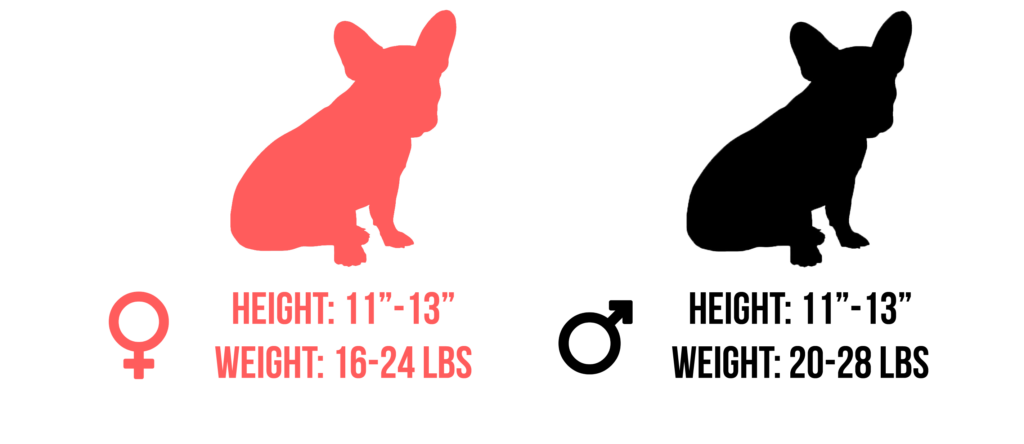 Generally, a French bulldog is about 11 to 13 inches tall at the shoulder. It should weigh less than 28 pounds with males weighing 20 to 28 pounds, and females weighing 16 to 24 pounds.
Generally, a French bulldog is about 11 to 13 inches tall at the shoulder. It should weigh less than 28 pounds with males weighing 20 to 28 pounds, and females weighing 16 to 24 pounds.
Appearance
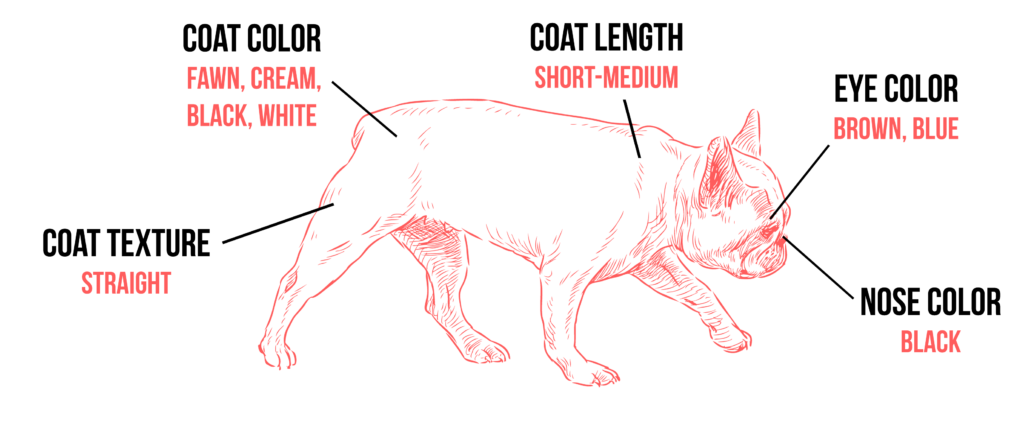 The French bulldog shares several characteristics of its bulldog ancestors. It’s heavy-boned and has a wide body, muscular build, big square head, and a low center of gravity. It has a curious, alert look on their face that is enhanced by its bat-like ears. They’re called “bat ears” because they are broad-based, long, and end with rounded tips. The ears are one of the French bulldog’s most distinctive features, along with its half-flat, half-domed skull.
The French bulldog shares several characteristics of its bulldog ancestors. It’s heavy-boned and has a wide body, muscular build, big square head, and a low center of gravity. It has a curious, alert look on their face that is enhanced by its bat-like ears. They’re called “bat ears” because they are broad-based, long, and end with rounded tips. The ears are one of the French bulldog’s most distinctive features, along with its half-flat, half-domed skull.
It’s large, square head has dark, moderate-sized round eyes set far apart, though lighter eyes may be present in lighter coated dogs. The muzzle is short and broad with a black nose. The upper lip is thick and droops over the lower jaw at the sides. The jaw is deep, square-shaped, and undershot.
The French bulldog’s forelegs are short and muscular and set wide apart, while the hindquarters are slightly longer which set the loins above the shoulder at a downward angle. The tail is short but can be screwed (but never curly) and hung low with a thick root and fine tip.
A French bulldog sports a short, easy-care coat that is smooth, short, and fine. Its loose, soft skin around the shoulders and head forms wrinkles. It differs from the English bulldog in its movement, which is free, unrestrained and has good reach and drive.
Color
French bulldogs come in a variety of colors, including fawn, cream, white, various shades of brindle — a brownish or tawny-colored animal coat patterned with specks and/or streaks of other colors — such as black brindle and the striking tiger brindle, and brindle and white, known as brindle pied. French bulldogs can be any color except solid black, liver (a solid reddish-brown with brown pigmentation on the lips and nose), mouse (a light steely gray), and black with white or tan.
Behavior
Personality
A French bulldog’s greatest qualities are charm and adaptability. Frenchies love almost everyone they meet and enjoy entertaining their families as well as cuddling and snoozing with their favorite person. Like many other dogs bred for companionship, the French bulldog needs lots of social interaction and close contact with its owner. Otherwise, it could develop separation anxiety and destructive behaviors.
Though they love to play, playing with a French bull dog can be on the destructive side. Frenchies enjoy mauling their toys and playing keep-away. Avoid giving them toys on which they could choke, such as rawhides, pig ears, and dental chews. Be aware that they are also fond of hiding things and making their people search for them.
French bulldogs are also known for their quiet attentiveness. They follow their people around from room to room without making a nuisance of themselves. When they want your attention, they’ll tap you with a paw. The French bulldog is a highly alert breed who barks judiciously. They are excellent watchdogs and can be protective of their home and family. If a Frenchie barks, you should check it out.
Training
Although Frenchies are cute and always look ready to cuddle, these dogs have quite the personality and will need adequate amounts of training and attention to make it a civilized companion. Though they’ve been deemed as “stubborn” at times, French bulldogs are still quite eager to please their owners and do well with training if you make training seem like a game and provide a firm hand and the proper motivation (usually food).
It’s best if you start your french bulldog training the day you bring him home. Even when they’re young, AKC French bulldog puppies are capable of soaking up everything you can teach them. If you wait too long to start training, you might find yourself dealing with a headstrong dog. It’s recommended that puppies start kindergarten classes by the time they are 10 to 12 weeks old, taking into consideration the vaccines required by the class (such as kennel cough or rabies).
While waiting for your puppy’s training to formally begin, you can start his training at home and he can socialize with family and friends until the vaccines are completed.
A word of advice: any dog, no matter how friendly, can develop obnoxious levels of barking, digging, and other unwanted behaviors if he is bored, untrained or unsupervised. Also, keep in mind that dogs can be a trial to live with during adolescence. In the case of the Frenchie, the “teen” years can start around six months and continue until the dog is about two years old.
Children & Other Pets
In general, French bulldogs get along well with children, and they’re not so small that toddlers can be a potential threat. Your dog will best get along with your kids if she grows up with them and has pleasant and relaxed experiences with them. In fact, this breed can be very affectionate with children and female French bulldogs can even be protective of them.
That being the case, no dog should ever be left alone with young children. It’s common sense to supervise and make sure that neither is poking or harassing the other.
As suggested above, French bull dogs do best with strangers and other dogs when socialized with them from puppyhood. Overly spoiled Frenchies, however, can be jealous of other dogs, especially if they’re getting attention from the Frenchie’s very own person, so watch out!
Health
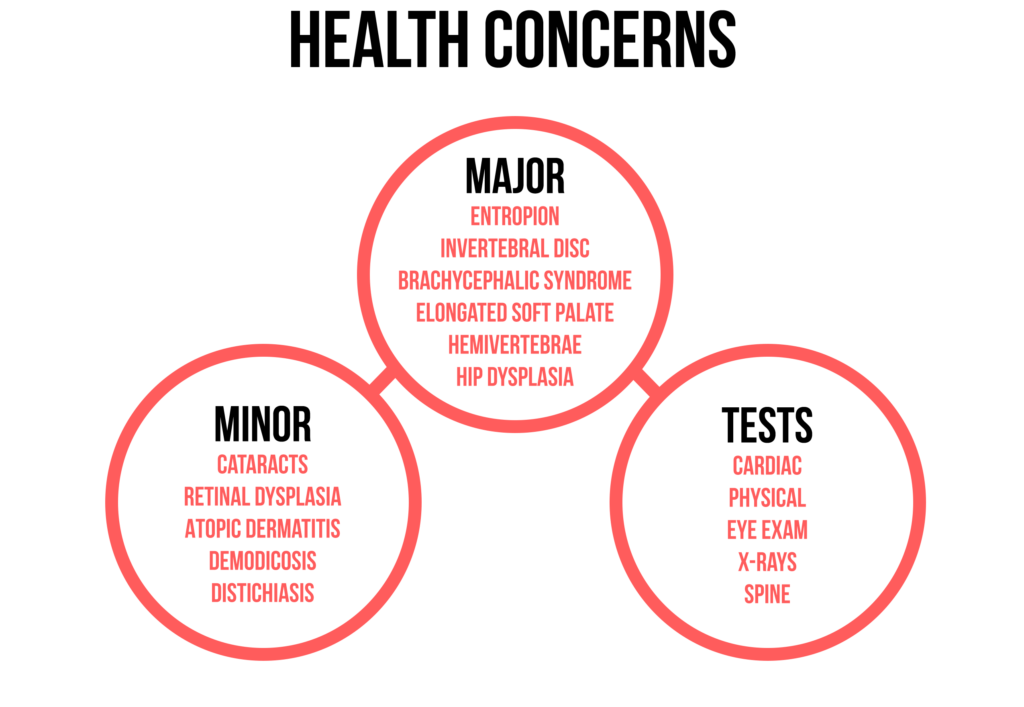 As with all dogs, provide your Frenchie with regular checkups, routine vaccinations, tests for intestinal parasites, heartworm prevention, and flea and tick control. Your vet should do regular dental checkups and care, and you should clean your dog’s teeth regularly at home as well.
As with all dogs, provide your Frenchie with regular checkups, routine vaccinations, tests for intestinal parasites, heartworm prevention, and flea and tick control. Your vet should do regular dental checkups and care, and you should clean your dog’s teeth regularly at home as well.
As a short-faced, brachycephalic, dwarf breed, French bulldogs may have some health concerns that you should be aware of. Their short face can make breathing more difficult than it is for long-nosed breeds, so Frenchies are less tolerant of heat, exercise, and stress, all of which increase the need to breathe. Be sure to keep your French bulldog cool in warm weather and avoid strenuous exercise.
Consult your veterinarian if your dog seems to overheat or become stressed easily and has noisy breathing or spits up foam. Pinched nostrils or an elongated soft palate (described in detail below) could be plaguing your pup. Anesthesia is also riskier in short-faced dogs, so be sure your veterinarian is experienced with such breeds should your Frenchie need to be anesthetized.
There’s no guarantee that your French bulldog will get any or all of these conditions listed below, but it’s important to be aware of them if you’re considering this breed.
Brachycephalic Airway Syndrome (BAS)
Any owner with a smoosh-faced dog should know about this one. BAS can be caused by a myriad of problems including narrow nostrils (stenotic nares), an elongated soft palate, a narrower trachea than usual, and sacs inside the voicebox or larynx. All of these narrow the dog’s airway, making breathing much harder than it is for other dogs with shorter soft palates and more open nostrils.
BAS puts strain on the heart and will eventually make any exertion exhausting for the dog. It can also cause a laryngeal collapse, which means a partial or total obstruction of airflow. Though French bulldogs are known for their grunts and snorts, sometimes these sounds can indicate one or more symptoms of BAS. Heat and humidity can make BAS symptoms worse. Treatment varies depending on the severity of the condition but includes oxygen therapy as well as surgery to widen nostrils or shorten palates.
Intervertebral Disc Disease (IVDD)
French bulldogs have a high risk for IVDD. This is a condition where the cushioning discs between the vertebrae of the spinal column either bulge or burst (herniate) into the spinal cord space. This can be caused by trauma, age, or simply from the physical jolt that occurs when a dog jumps off a couch. The bulging (or burst) discs then press on the nerves running through the spinal cord causing pain, nerve damage, and even paralysis.
Treatment usually involves nonsteroidal anti-inflammatory drugs (NSAIDS) made especially for dogs. DO NOT give your dog Tylenol or other NSAIDS made for humans—they can be toxic. Surgery can be helpful in some cases if performed within a day or two of the injury. Ask your veterinarian if treatments such as massage, water treadmills, and electrical stimulation are available for dogs, as they can be very successful.
Entropion
This condition occurs when the eyelids are curled painfully inward. It causes pain and sometimes even eye loss, and requires plastic surgery to fix the defect. If not treated, dogs with this condition can suffer for a lifetime with either chronic irritation, frequent infections, or corneal ulceration (from eyes too dry or eyelid hairs perpetually rubbing on the delicate cornea).
Canine Hip Dysplasia (CHD)
The hip joint is composed of the ball and the socket. Hip dysplasia is a heritable condition and involves the failure of the hip joints to develop normally (known as malformation), gradually deteriorating and leading to loss of function of the hip joints.
Hip dysplasia often begins while a dog is still young and physically immature. Though this condition can be present without clinical signs, early onset usually develops in french bulldog puppies after four months of age. Some dogs exhibit pain and lameness on one or both rear legs.
There are also cases of later onset, where hip dysplasia develops later due to osteoarthritis, a form of joint inflammation (arthritis) that is characterized by chronic deterioration, or degeneration of the joint cartilage. Dogs with hip dysplasia should not be bred. You should ask french bulldog breeders for proof that the parents have been tested for hip dysplasia and found to be free of problems.
Patellar Luxation
This condition occurs when the dog’s kneecap (patella) is dislocated from its normal anatomic position in the groove of the thigh bone (femur). When this happens, it can only be returned to its normal position once the quadriceps muscles in the hind legs of the animal relax and lengthen.
The specific symptoms of a dislocated kneecap will depend on the severity and persistence of the condition, as well as the amount of degenerative arthritis that is involved. Typically, a dog with a dislocated kneecap will exhibit prolonged abnormal hindlimb movement, abnormal gait (the way the dog moves), occasional skipping or hindlimb lameness, and sudden lameness.
The dog will rarely feel pain or discomfort once the kneecap is out of position, only feeling pain at the moment the kneecap slides out of the thigh bone’s ridges.
Patellar Luxation is present at birth, although the actual misalignment does not always occur until later. There are four grades of patellar luxation ranging from an occasional luxation causing temporary lameness in the joint, to the turning of the tibia is severe and the patella cannot be realigned manually. This gives the dog a bowlegged appearance. Severe patellar luxation may require surgery.
Hemivertebrae
This is a malformation of one or more vertebrae that causes it to be shaped like a wedge or triangle. This malformation can occur on its own or alongside other vertebrae malformations. Hemivertebra can cause no problems, or it can lead to instability and deformity of the spinal column, which in turn can lead to the spinal cord or the nerves arising from it becoming compressed and damaged.
This can lead to pain, weakness, incontinence (inability to control passing urine or feces), wobbliness (ataxia) on the hind legs, and/or paralysis. There is no treatment for the condition unless there is spinal cord pressure.
Elongated Soft Palate
The soft palate is the extension of the roof of the mouth. When it’s elongated, it can obstruct airways and cause difficulty in breathing. The treatment for Elongated Soft Palate is surgical removal of the excess palate.
Allergies
Dogs are susceptible to allergies, just like people are. There are three main types of allergies: food-based allergies, which are treated by an elimination of certain foods from the dog’s diet; contact allergies, (caused by a reaction to a topical substance such as bedding, flea powders, and dog shampoos), which are treated by removing the cause of the allergy; and inhalant allergies, caused by airborne allergens such as pollen, dust, and mildew.
Allergy symptoms may include itchy, red, moist, or scabbed skin; increased scratching; itchy back or base of tail; itchy ears and ear infections; sneezing; and vomiting among others.
*Note: French bulldogs do not tolerate heat well and can die from overheating very easily. They also may be sensitive to anesthesia.
Health Guarantees
Every dog has the potential to develop some type of genetic health problem, just like people have the potential to inherit a particular disease. If you’re going to buy a French bulldog puppy, find a good breeder who is committed to breeding the healthiest animals possible and will show you health clearances for both your puppy’s parents. Health clearances prove that a dog has been tested for and cleared of a particular condition.
Before Frenchies can be included in the Canine Health Information Center (CHIC) database, the FBDCA requires them to have a clearance from the Canine Eye Registry Foundation, hip evaluations from the Orthopedic Foundation for Animals (with a score of fair or better), PennHIP or Ontario Veterinary College (OVC), and an OFA patella (knee) evaluation. Optional tests are OFA cardiac (heart) and thyroid exams. Your dog should also be checked for elbow dysplasia, hypothyroidism, and von Willebrand’s disease. You can search the OFA and CHIC websites yourself to see if a pup’s parents are listed.
French bulldog breeders must agree to have all test results, positive or negative, published in the CHIC database. However, a dog doesn’t need to receive good or even passing scores on the evaluations to obtain a CHIC number, so CHIC registration alone is not proof of soundness or absence of disease. Since test results can be accessed by anyone, check the CHIC website for your puppy’s parents’ test results. If the breeder tells you she doesn’t need to do those tests because she’s never had problems in her lines and her dogs have been “vet checked,” then you should go find a breeder who is more rigorous about genetic testing.
After you’ve taken a new puppy into your home, remember that you have the power to protect him from obesity. Keeping a French bull dog at an appropriate weight is one of the best ways to extend his life. Make the most of your preventive abilities and help ensure a healthier life for your dog.
Maintenance
 Care
Care
The French bulldog is a very social dog and does best in a family where someone is home most of the day. This means he cannot live in the backyard or garage—only indoors as a member of the family. It’s also necessary that he lives indoors given that he’s a “flat-faced” breed and needs a climate-controlled environment. So don’t leave him in your car, either.
Frenchies don’t need a great deal of exercise. A short daily walk or outdoor romp is sufficient to keep them in shape. Schedule walks and outdoor playtime for cool mornings and evenings. Avoid outside exercise on hot, humid days since this breed is sensitive to heat. Because of this, keep in mind that French bulldogs are not the breed for you if you enjoy hiking or jogging with a dog.
Because they are small, social dogs that need little exercise, French bulldogs make for the perfect small home, condo, or apartment dog. You won’t have to worry about them yapping at your neighbors because Frenchies rarely bark. That said, you can count on them to alert their owners to danger.
Frenchies are not good swimmers and will sink! They have a top-heavy frame, chest, and head and can quickly drown if they are in water deep enough so their feet can’t touch the ground. Though some of these dogs enjoy the water and can do so under close supervision or with a life jacket, in general, they should not have access to pools, spas or other bodies of water.
What do I feed a French bulldog?
French bulldogs usually need between 1 and 1.5 cups of high-quality dry dog food a day, divided into two meals. Ultimately, how much your dog eats will depend on his size, age, build, metabolism, and activity level. A highly active dog will need more food than a lazy dog, for example. Because Frenchies are a small breed and not very active, overfeeding can easily occur, so be careful.
Giving your dog high-quality food will best help your dog grow and thrive. What you feed your dog is an individual choice, but working with your veterinarian or breeder will be the best way to determine the appropriate diet to increase his longevity. Clean, fresh water should be available at all times.
Grooming
French bulldogs are easy to groom. They have coats that are short, smooth, and fine. They are average shedders and lose their undercoat twice a year during the spring and fall. Brush your Frenchie weekly with a rubber hound glove or a soft bristle brush.
Bathe your dog monthly, or as needed, and be sure to thoroughly clean and dry the folds of the skin with a high-quality shampoo to keep the natural oils in his skin and coat. Keeping the facial wrinkles clean and dry will prevent bacterial infections.
Clean your Frenchie’s ears regularly with a warm, damp cloth and run a cotton swab around the edge of the ear canal. DO NOT stick the cotton swab into the actual ear canal. Sparingly apply mineral or baby oil to the edges of the ears if they appear dry. Oil can also be used on a dry nose.
Since French bulldogs don’t naturally wear their nails down they’ll need their nails trimmed regularly to prevent painful splitting and tearing. They should never get long enough to hear them clacking on the floor. Their teeth should be brushed regularly for good dental health and fresh breath.
Start grooming your Frenchie at a young age and teach it to stand on a table or floor to make this experience easier for both of you. Always take the time to check for any scabs, skin lesions, bare spots, rough, flaky skin, or signs of infections. Also check her ears, eyes, and teeth for any discharge or bad smells. Both are signs that your Frenchie may need to see the vet.
If you’re uncomfortable with any aspect of grooming, such as trimming nails, take your dog to a professional groomer who understands the needs of French bulldogs.
Questions
What do I feed a French bulldog?
French bulldogs usually need between 1 and 1.5 cups of high-quality dry dog food a day, divided into two meals.
How noisy is a French bulldog?
Not very. The French bulldog is a highly alert breed who barks judiciously. They are excellent watchdogs and can be protective of their home and family. If a Frenchie barks, you should check it out.
How much does it cost to care for a French bulldog?
French bulldogs are quite expensive. Check out this article to see this family’s experience of buying a new French bulldog puppy and how much it cost them after just three days. Take into consideration the initial cost of the puppy, food, veterinarian visits, shots, training classes, toys, leashes, grooming, etc. Here’s another article that can break it down for you.
Resources
Rescue organizations/groups
- French Bulldog Rescue Network
- French Bulldog Fanciers of Canada
- French Bulldog Village
- Chicago French Bulldog Rescue
Breed organizations
Top Breeders
- Premier French Bulldogs
- Little Frenchie Kisses
- Allusion French Bulldogs
- Copen’s French Bulldogs
- Carob French Bulldogs
- Rolling Hills Frenchies
- Pin Oak Frenchies
- Jolie French Bulldogs
- Kami Bulldogs
- Starlette Frenchies
- Forever Young French Bulldogs
- BlueHaven French Bulldogs
- Sensational Bulldogs
- Blue Ribbon French Bulldogs
- Frenchie Kisses Kennel
- Derby City French Bulldogs
- Umpqua Valley Kennels
- Top Paw Frenchies
- Rock House Frenchies
- The Bullmarket French Bulldogs
Adult French Bulldogs For Sale
French Bulldog Puppies For Sale
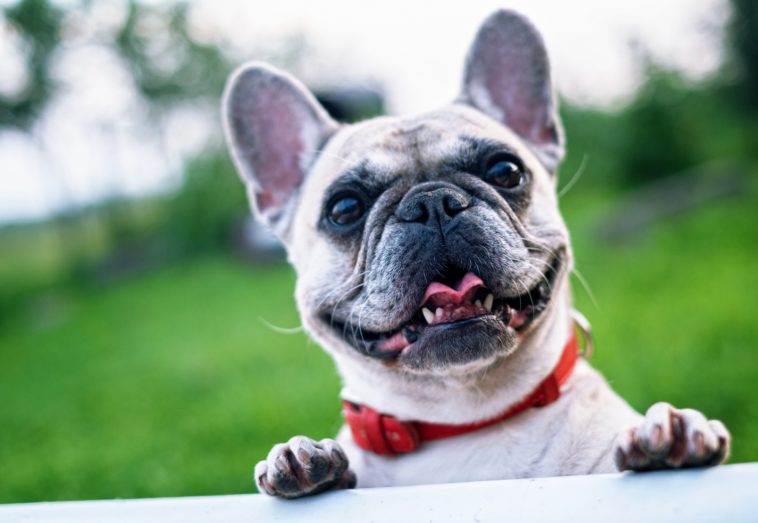
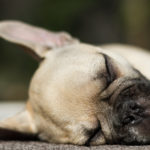

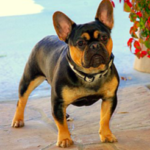
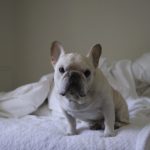
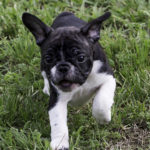

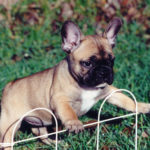


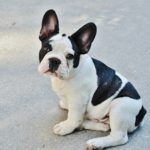
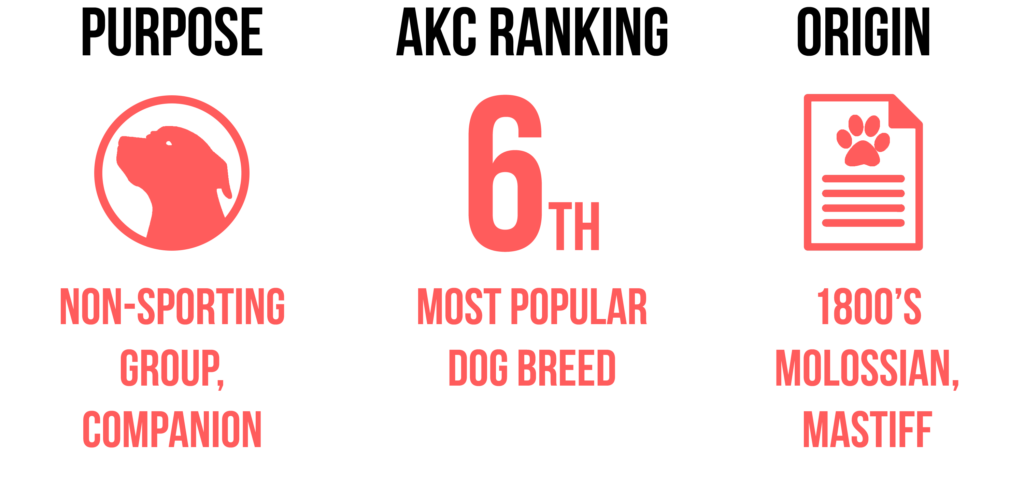 History
History Care
Care